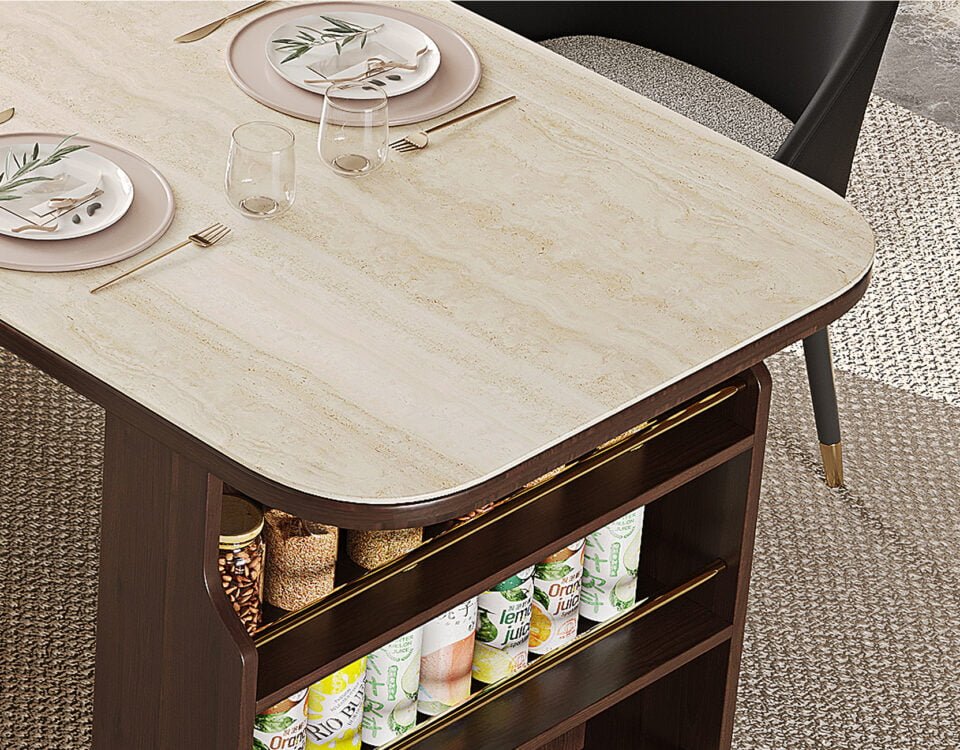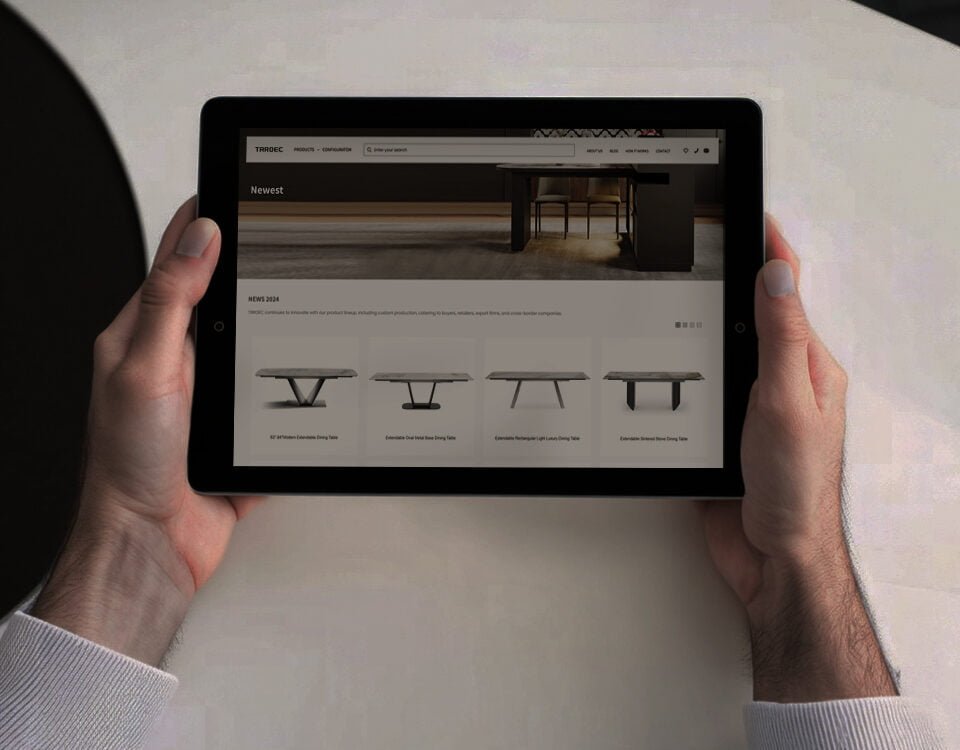
Introduction to Eco-Friendly Furniture Design
Eco-friendly furniture design represents a significant shift within the furniture industry towards sustainability and environmental responsibility. This movement stems from rising awareness about various environmental issues, compelling designers and manufacturers to rethink traditional approaches. Eco-friendly furniture aims to mitigate harmful impacts on the environment through the use of sustainable materials and production practices.
One of the primary drivers behind this trend is the increasing consumer awareness regarding the importance of sustainable living. As individuals become more educated about the ecological consequences of their choices, there is a heightened demand for products that align with values of environmental stewardship. Consumers today are not just purchasing items for their functionality or aesthetic appeal but also considering how these items impact the planet.
Another significant factor is the growing commitment to reducing ecological footprints. Eco-friendly furniture design encompasses the use of materials like reclaimed wood, bamboo, and recycled metals, which are less taxing on natural resources. By choosing these materials, manufacturers can significantly diminish the carbon emissions and waste associated with furniture production.
The desire for healthier living environments has also fueled the adoption of eco-friendly furniture. Traditional furniture often involves finishes and treatments laden with toxic chemicals, which can degrade indoor air quality. Eco-friendly options, on the other hand, prioritize non-toxic finishes and materials that foster cleaner and safer indoor spaces.
Overall, the confluence of these factors has catalyzed a broader cultural shift towards more sustainable and environmentally-conscious practices within the furniture industry. As consumer preferences continue to evolve, it is anticipated that the demand for eco-friendly furniture will only grow, underlining the crucial role of sustainability in contemporary design philosophy.
Historical Context and Evolution
Furniture design has a rich and diverse history, characterized by evolving materials and techniques that reflect broader societal changes. Initially, furniture was crafted from readily available resources such as wood, stone, and metals. The use of these traditional materials, while functional and aesthetically pleasing, was often unsustainable. For instance, the extensive use of hardwoods like mahogany and teak led to significant deforestation and loss of biodiversity.
During the Industrial Revolution, furniture production underwent substantial transformation. The advent of mechanized processes allowed for mass production, which brought furniture accessibility to the general public. However, this period also saw the height of material exploitation. Factories consumed large quantities of natural resources, and industrial waste contributed to significant environmental pollution. Traditional craftsmanship began to decline, giving way to less sustainable practices.
In the 20th century, new materials such as plastics and synthetic fabrics became prevalent. While these innovations allowed for creative versatility and affordability, they introduced new environmental challenges. Plastics are derived from petroleum, a non-renewable resource, and they contribute to long-term pollution problems due to their non-biodegradable nature. As environmental awareness grew, so did the criticism of these non-sustainable approaches to furniture design.
Contrastingly, the late 20th and early 21st centuries marked a pivotal shift towards eco-friendly materials in furniture design. Innovations in sustainable practices emerged, driven by technological advancements and an increasing demand for environmentally responsible products. Modern designers now prioritize materials that minimize environmental impact. For example, bamboo, a fast-growing and renewable resource, has become popular due to its durability and environmental benefits. Recycled materials, such as reclaimed wood and metals, are also increasingly used to reduce waste and promote sustainability.
These shifts demonstrate a growing commitment to sustainability in the furniture industry. By learning from past practices and embracing innovative, eco-friendly materials, modern furniture design aims to reconcile functionality, aesthetics, and environmental responsibility, paving the way for a more sustainable future.
Types of Eco-Friendly Materials
In recent years, the furniture design industry has seen a significant shift towards the use of eco-friendly materials. This movement is driven by the growing awareness of environmental issues and the demand for sustainable living solutions. Among the various eco-friendly materials, some of the most prominent include bamboo, reclaimed wood, recycled metals, and organic fabrics. Each of these materials brings its own set of benefits in terms of sustainability, durability, and design flexibility.
Bamboo is a rapidly renewable resource, which makes it an excellent alternative to traditional hardwoods. Unlike many trees that can take decades to mature, bamboo can be harvested within three to five years without causing long-term damage to the ecosystem. Its natural resilience and hardness make it suitable for everything from flooring to furniture. Furthermore, bamboo’s aesthetic appeal and versatility in design enable it to fit seamlessly into various décor styles, from modern to rustic.
Reclaimed wood offers another sustainable option by repurposing existing wood that might otherwise go to waste. Sourced from old buildings, barns, and other structures, reclaimed wood not only reduces the demand for new timber but also contributes to a unique, vintage look in furniture design. This material is often characterized by its rich history and durability, as older wood tends to be more resilient. Using reclaimed wood also reduces deforestation and promotes the recycling of valuable resources.
Recycled metals are increasingly being incorporated into furniture design as well. Metals like steel, aluminum, and iron can be melted down and reformed into new products without losing their structural integrity. This recycling process significantly reduces the carbon footprint associated with mining and processing new metals. Recycled metals offer exceptional strength and longevity, making them ideal for frames, supports, and other structural elements in furniture.
Organic fabrics, such as cotton, linen, and hemp, are gaining popularity for their minimal environmental impact. These materials are grown without the use of synthetic pesticides or fertilizers, which helps to preserve soil health and reduce pollution. Organic fabrics are also biodegradable, which means they won’t contribute to landfill waste at the end of their lifecycle. Their softness, breathability, and variety of textures enhance the comfort and aesthetic appeal of upholstered furniture.
In summary, the use of eco-friendly materials in furniture design not only promotes environmental sustainability but also offers a variety of benefits in terms of durability and flexibility in design. By choosing materials like bamboo, reclaimed wood, recycled metals, and organic fabrics, consumers and designers alike can contribute to a more sustainable future.
Certifications and Standards
In the realm of eco-friendly furniture design, certifications and standards play a critical role in guiding consumers toward sustainable choices. Understanding these certifications can help buyers ensure that their purchases are genuinely environmentally friendly. Among the foremost certifications are the Forest Stewardship Council (FSC), Greenguard, and Cradle to Cradle.
The Forest Stewardship Council (FSC) certification is one of the most recognized and respected benchmarks in sustainable forestry. FSC-certified products guarantee that the wood used in furniture comes from responsibly managed and sustainable forests. This certification monitors the entire supply chain, ensuring the ecological, social, and economic integrity of forest ecosystems. By choosing FSC-certified furniture, consumers support responsible forest management practices that minimize environmental impact.
Another significant certification is Greenguard, which focuses on indoor air quality. Greenguard-certified products have been tested for chemical emissions that can compromise indoor environments. Furniture that meets Greenguard standards emits low levels of volatile organic compounds (VOCs), contributing to healthier indoor air quality. This certification is particularly important for consumers concerned about the health implications of their home furnishings.
Cradle to Cradle is a holistic certification that evaluates the entire lifecycle of a product. It assesses materials for safety to human and environmental health, design for future use cycles, and the product’s overall environmental footprint. Cradle to Cradle certified furniture signifies that the product has been designed with sustainable principles in mind, from the use of renewable energy to water stewardship and social fairness. This certification encourages a circular economy, where products are continuously repurposed and recycled.
These certifications enable consumers to make informed decisions by ensuring the authenticity of eco-friendly claims. Eco-labels such as FSC, Greenguard, and Cradle to Cradle provide transparency and trust, helping buyers identify products that meet rigorous environmental and health standards. As awareness about sustainability grows, these certifications become invaluable tools in the journey toward more responsible consumption and environmentally conscious living.
Benefits of Eco-Friendly Furniture
Eco-friendly furniture provides a multitude of benefits that extend beyond the realm of just aesthetics. One of the primary advantages of selecting eco-friendly materials in furniture design is their significant contribution to environmental conservation. These materials, often sourced responsibly and sustainably, help reduce the ecological footprint by minimizing deforestation, lowering carbon emissions, and reducing the waste that ends up in landfills. For instance, furniture made from reclaimed wood or recycled metals not only conserves natural resources but also gives new life to materials that might otherwise be discarded.
An added benefit of eco-friendly furniture is its positive impact on indoor air quality. Traditional furniture manufacturing often involves the use of volatile organic compounds (VOCs) found in adhesives, paints, and finishes, which can emit harmful gases into living spaces. In contrast, eco-friendly furniture is frequently crafted using non-toxic, low-VOC materials, thus promoting healthier indoor environments. This can be particularly beneficial for individuals with allergies or respiratory conditions, making eco-friendly choices not just a preference, but a necessity for better living conditions.
Supporting sustainable practices through eco-friendly furniture is another noteworthy aspect. Purchasing furniture from companies that prioritize sustainability means investing in practices that protect ecosystems, support fair labor conditions, and endorse ethical sourcing. This commitment to sustainability can also inspire other businesses and consumers to adopt similar practices, creating a broader impact over time.
From a financial perspective, eco-friendly furniture can result in long-term cost savings. Although the initial investment may be higher, eco-friendly pieces are often designed for durability and longevity, reducing the need for frequent replacements. This durability ultimately translates into lower total expenditures over the lifetime of the furniture.
Lastly, the aesthetic appeal of eco-conscious designs has seen a marked increase in recent years. Designers are continually innovating to combine functionality with style, ensuring that eco-friendly furniture is not only good for the planet but also visually appealing. With unique textures, natural finishes, and modern designs, these pieces can enhance any living space while reflecting the owner’s commitment to environmental responsibility.
Challenges in Adopting Eco-Friendly Materials
Adopting eco-friendly materials in furniture design, while imperative for sustainable development, presents a host of challenges for designers and manufacturers. One of the foremost obstacles is the higher production costs associated with sustainable materials. Unlike traditional materials, eco-friendly alternatives often require more complex manufacturing processes and rigorous quality testing, contributing to elevated costs.
Additionally, the limited availability of sustainable resources is another significant hurdle. Many sustainable materials, such as bamboo or reclaimed wood, are not as abundantly available as conventional options. This scarcity can lead to supply chain bottlenecks and higher prices, making it difficult for large-scale manufacturers to consistently procure these materials.
Another key challenge is the need for consumer education. Although there is a growing awareness regarding the importance of eco-friendly practices, consumers often lack comprehensive knowledge about the benefits and durability of sustainable furniture materials. This knowledge gap can affect their purchasing decisions, leading to a preference for cheaper, less sustainable options.
Despite these challenges, several potential solutions and advancements can help mitigate these issues in the future. For instance, innovations in material science are creating more affordable and widely available sustainable materials. Technologies such as bio-based resins and recycled composites hold promise for reducing the reliance on non-renewable resources. Furthermore, increased investment in sustainable forestry and responsible sourcing practices can help ensure a stable supply of eco-friendly raw materials.
Efforts to educate consumers about the benefits and long-term value of sustainable furniture are also crucial. Marketing campaigns and educational initiatives that highlight the environmental and health benefits of eco-friendly furniture can drive a shift in consumer preferences towards more sustainable choices.
Overall, while the transition to eco-friendly materials in furniture design is fraught with challenges, ongoing advancements and strategic initiatives can pave the way for a more sustainable future in the industry.
Case Studies of Successful Eco-Friendly Designs
In recent years, the furniture industry has seen a commendable shift towards eco-friendly materials. Leading brands such as IKEA and West Elm have spearheaded this movement, setting a benchmark for sustainability. Smaller, boutique brands have also contributed significantly to the eco-friendly design landscape, showcasing innovative and conscientious approaches to furniture design.
One prominent example is IKEA, whose commitment to sustainability is embodied in their approach to using renewable materials. Their SUNDVIK child’s chair, crafted from sustainable wood, is a testament to this ethos. By sourcing timber from responsibly managed forests and ensuring minimal waste during production, IKEA not only offers affordable, stylish furniture but also mitigates environmental impact.
Similarly, West Elm, renowned for its stylish and modern designs, has made notable strides in sustainable furniture. A standout product is their Emerson Reclaimed Wood Dresser, constructed from recycled woods. This piece highlights the brand’s dedication to using reclaimed materials, reducing deforestation, and promoting sustainability. West Elm’s commitment extends beyond materials; they also emphasize fair trade practices, thereby fostering both environmental and social responsibility.
On the boutique front, brands like Medley have made a significant impact. Medley’s environment-friendly designs, such as the Kingsley Bed, use natural and organic materials like certified organic latex, wool, and FSC-certified hardwoods. Their emphasis on low VOC (volatile organic compounds) finishes ensures that their products contribute to healthier indoor air quality, underscoring their holistic approach to sustainability.
These successful implementations of eco-friendly materials by both large and small companies highlight a broader industry trend. The use of sustainable woods, recycled materials, and environmental certifications are not only reducing ecological footprints but also setting new standards for what consumers expect from modern furniture design. As these practices become more widespread, the positive impact on our planet will continue to grow, showcasing the powerful role of eco-friendly design in shaping a sustainable future.
Future Trends in Eco-Friendly Furniture Design
The future of eco-friendly furniture design is poised for significant growth and innovation, driven by a combination of advancing technology, increasing consumer demand, and evolving design philosophies. As awareness surrounding environmental sustainability continues to spread, the market for sustainable furniture is anticipated to expand, inviting new players and encouraging established brands to adopt greener practices.
One of the most exciting trends in the domain is the continuous development of sustainable materials. Beyond the widespread use of reclaimed wood and recycled metals, emerging innovations include bio-composites made from plant fibers, mycelium-based materials, and biodegradable plastics derived from renewable sources. These alternatives promise to reduce the environmental impact of furniture production, offering consumers durable, aesthetically pleasing, and eco-friendly options.
In addition to new materials, technological advancements are set to revolutionize the way we approach sustainable furniture design. Innovations in digital fabrication methods such as 3D printing and CNC machining enable precise manufacturing with minimal waste. Furthermore, the integration of smart technologies can enhance the functionality and longevity of furniture pieces, reducing the need for frequent replacements and consequently, limiting waste generation.
Another noteworthy trend is the shift towards circular economy principles within the furniture industry. Companies are increasingly exploring models where products can be easily disassembled, repaired, or repurposed, thereby extending their lifecycle and minimizing environmental footprint. This approach not only aligns with sustainability goals but also appeals to the growing segment of eco-conscious consumers seeking long-term value and ethical products.
Consumer demand will play an instrumental role in shaping the future of eco-friendly furniture design. As more individuals prioritize sustainability in their purchasing decisions, the market will respond with greater innovation and a wider array of eco-friendly options. This shift encourages designers and manufacturers to continuously explore new ways to marry form, function, and sustainability, ensuring that eco-friendly furniture evolves to meet the needs of a progressively conscious world.




